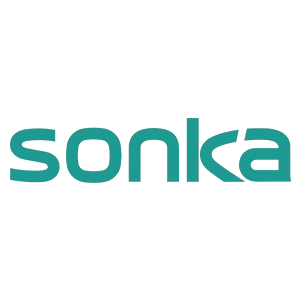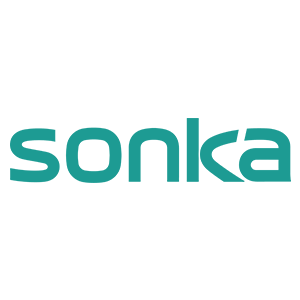Ultrasound technology offers an innovative approach to measuring adipose tissue by utilizing sound waves to create detailed images of tissues. This process involves transmitting ultrasound waves that reflect off different types of tissues, which are then analyzed to measure the thickness of adipose tissue. This non-invasive method enables real-time assessment and provides immediate feedback regarding body fat distribution. A study published in the Journal of Obesity highlights that ultrasound technology can accurately differentiate between subcutaneous and visceral fat tissues. These accurate measurements can significantly enhance personalized dietary and fitness recommendations, facilitating better health outcomes without the discomfort or invasiveness of traditional methods.
Ultrasound presents several advantages over traditional body fat assessment methods. Unlike techniques involving radiation, such as DXA scans, ultrasound is a safe alternative. It promises convenience, as it is more user-friendly compared to complex assessments like MRI, making it ideal for regular usage in clinical and fitness settings. The portability of ultrasound devices enhances accessibility across diverse environments, allowing practitioners to perform assessments with ease. Numerous studies affirm that ultrasound yields results comparable in accuracy to other methods, while also being a more cost-effective option. This makes ultrasound an attractive choice for clinics and fitness centers seeking reliable fat analysis without the extensive costs associated with traditional machines and procedures.
Clinical studies have consistently confirmed the high correlation of ultrasound measurements with gold-standard methods for body composition assessment. This validation arises from extensive clinical trials showing the effectiveness of ultrasound in tracking body fat changes. Regulatory bodies have recognized its reliability, endorsing ultrasound for use in both clinical and sports medicine settings. Importantly, evidence indicates that ultrasound can detect subtle variations in body composition, making it a crucial tool for effective obesity management. Its ability to differentiate between types of fat and precisely track body composition changes ensures it stands on par with traditional methods, offering a reliable alternative for healthcare professionals.
Precision in ultrasound measurements can be influenced by several factors, including operator skill, equipment calibration, and patient-specific conditions like hydration levels. For consistent results, it is essential to establish standardized protocols that minimize variability across different users. This is particularly important when considering operator and patient variability that can affect measurement outcomes. Responding to these challenges, the focus of recent advancements in ultrasound technology has shifted towards enhancing software algorithms. Such improvements aim to boost accuracy and reliability even under variable conditions. By addressing these influencing factors, the precision of body composition measurements can be significantly enhanced, broadening the accessibility and applicability of ultrasound technology in body fat analysis.
In the realm of body fat analysis, three predominant methods are often compared: Ultrasound, Bioelectrical Impedance Analysis (BIA), and Dual-energy X-ray Absorptiometry (DXA). BIA is popular due to its quick assessments; however, it is sensitive to hydration and body water fluctuations, making it less reliable, especially in athletes or individuals with varying water retention. On the other hand, DXA scans are renowned for their precision but involve radiation exposure, which limits their desirability for regular monitoring. In contrast, ultrasound emerges as a balanced alternative by offering a combination of safety, ease of use, and accuracy without the drawbacks of hydration sensitivity or radiation exposure. This makes ultrasound an appealing choice for a wide array of users, from fitness enthusiasts to healthcare professionals.
Ultrasonic assessment for body fat measurement is gaining traction due to several notable strengths. Firstly, its non-invasive nature makes it a comfortable option for users, while real-time feedback allows for immediate results and adjustments in monitoring. Importantly, ultrasound excels in accurately identifying visceral fat, a component crucial in evaluating health risks related to obesity. Its effectiveness extends to a variety of tissue types, enhancing its utility in clinical and sports settings. The versatility of ultrasound further shines through its broad applicability, suiting diverse clientele ranging from athletes to those managing obesity. This adaptability underlines ultrasound's potential to become a staple technology in comprehensive body composition analysis.
SONKA's body composition scales, especially the ones targeting Dubai and Egypt, are revolutionizing body fat analysis by offering detailed metrics through advanced ultrasonic technology. These scales enable comprehensive evaluations of body composition, encompassing muscle, fat, and water distribution, making them indispensable tools in modern health assessments. The competitive pricing ensures that clinics and gyms in these regions can access advanced body analysis techniques that were previously only available in high-end medical facilities. Additionally, the scales boast a built-in printer feature that allows users to immediately generate reports, thus enhancing user experience and facilitating seamless data tracking and analysis.
The SONKA Body 570 stands out as a premier tool engineered with precision for clinical environments that demand accurate body fat analysis. Its advanced bio-scan technologies set a higher standard in measuring body composition, delivering results with remarkable detail and reproducibility. This cutting-edge analyzer is ideal for healthcare professionals seeking to provide enhanced patient care through customized weight management programs. The sophisticated measurement methods employed by the SONKA Body 570 facilitate a deeper understanding of patient needs, allowing for tailored interventions that boost health outcomes.
Body fat analysis via ultrasound has revolutionized the field of obesity management, playing a pivotal role in identifying and monitoring patients at risk for obesity-related conditions. By providing detailed insights into an individual's body composition, this technology assists healthcare providers in creating personalized health plans tailored to each patient's unique needs. This approach not only enhances patient engagement but also improves compliance, as patients can better understand their health through clear visual data representation. Additionally, studies have shown that targeted interventions based on precise body analysis can lead to significantly better health outcomes, emphasizing the importance of integrating this technology into clinical settings.
The future of body composition technology is set to bring exciting advancements, with emerging technologies aiming to enhance the capabilities of ultrasound body fat analysis. Notably, the development of mobile applications is on the horizon, enabling real-time health tracking at users' fingertips. Furthermore, research into integrating artificial intelligence with these technologies is underway, promising more accurate predictions of body fat trends over time. These advancements are expected to focus on improving accessibility and user-friendliness, encouraging widespread adoption for personal health monitoring. As technology evolves, these innovations could make health monitoring more intrinsic to daily life, benefiting individuals and healthcare systems alike.


Copyright © 2025 by Shenzhen Sonka Medical Technology Co., Limited - Privacy policy